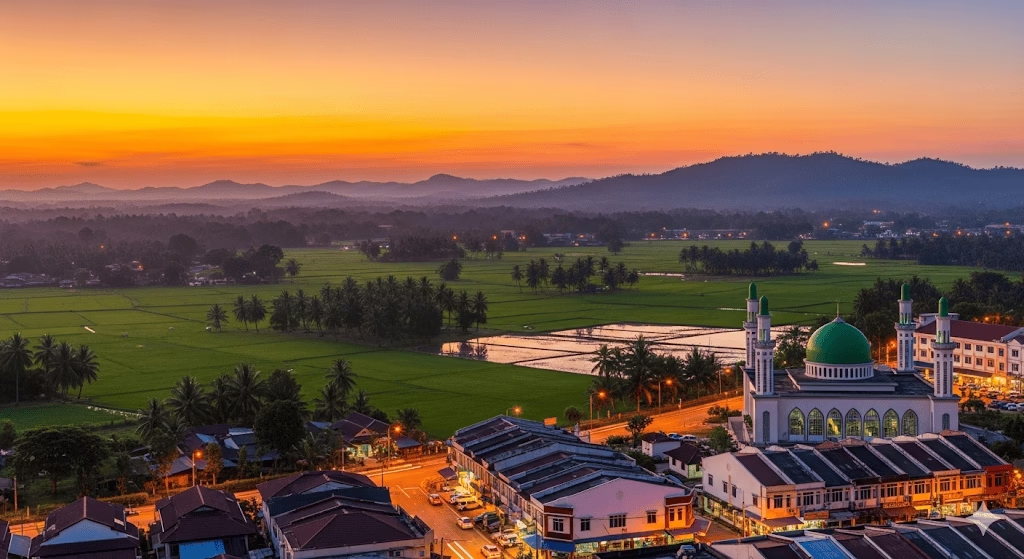Loagan Bunut National Park

Introduction
Tucked away in the heart of Sarawak, Malaysia, Loagan Bunut National Park is a pristine sanctuary celebrated for its seasonally disappearing lake, rich biodiversity, and peaceful natural charm. Established in 1990, this 10,736-hectare park is home to Loagan Bunut Lake — Sarawak’s largest natural freshwater lake — which periodically drains and refills depending on the water levels of nearby rivers.
The park’s unique hydrological phenomenon, coupled with its thriving wetland ecosystems, traditional Berawan fishing culture, and tranquil forest trails, makes it a must-visit for eco-tourists and nature photographers. Whether you’re seeking wildlife encounters, cultural immersion, or serene landscapes, Loagan Bunut offers a rare window into Sarawak’s natural heritage.
Address
Loagan Bunut National Park Headquarters
Loagan Bunut National Park,
Taman Negara Loagan Bunut,
Tudan, 98050 Miri, Sarawak, Malaysia.
Phone: +60 85-775204
Email: info@sarawakforestry.com
Map Embed
Key Facts
| Category | Details |
|---|---|
| Location | Belaga Division, Sarawak, Malaysian Borneo |
| Established | 1990 |
| Area | Approximately 10,736 hectares |
| UNESCO/Recognition | Part of the Heart of Borneo conservation initiative |
| Main Feature | Loagan Bunut – Sarawak’s largest natural freshwater lake |
| Flora & Fauna | Peat swamp forests, lowland dipterocarp trees, hornbills, herons, long-tailed macaques, proboscis monkeys, and freshwater fish species |
| Popular Activities | Birdwatching, photography, hiking, cultural visits to Berawan villages, and boat rides |
| Operating Hours | 8:00 AM – 5:00 PM (daily) |
| Official Website | Sarawak Forestry Corporation – Loagan Bunut National Park |
Entry Ticket Fees
| Category | Malaysians (MYR) | Non-Malaysians (MYR) |
|---|---|---|
| Adults | 10 | 20 |
| Children (6–17 years) | 3 | 7 |
| Senior Citizens (60+) | 5 | 10 |
| Guided Tour (optional) | 50–100 per group | 50–100 per group |
| Boat Ride (permit & guide) | 40–60 per trip | 40–60 per trip |
Prices may vary based on tour packages and group size.
Key Highlights
- The Vanishing Lake – Loagan Bunut’s water level changes dramatically with the seasons, sometimes exposing vast mudflats where local fishermen practice traditional methods.
- Berawan Fishing Culture – Witness or learn about the Selambau fishing technique, a centuries-old method used by the local Berawan people.
- Birdwatcher’s Paradise – Over 200 bird species, including herons, egrets, hornbills, and migratory waterfowl, inhabit the wetlands.
- Scenic Boat Cruises – Glide along the tranquil waters to explore submerged forests and observe wildlife up close.
- Educational Trails – Short interpretive trails through the park offer insights into the area’s ecology and cultural heritage.
Things to Do
- Birdwatching: Bring binoculars for sightings of hornbills, kingfishers, and migratory species. The early morning hours are ideal.
- Boat Excursions: Enjoy a guided boat tour across the lake to observe aquatic flora, fauna, and the unique hydrological phenomenon.
- Nature Walks: Explore short walking trails such as the Hydrological Trail, leading through swamp forest and observation points.
- Cultural Visits: Stop by nearby Berawan and Penan villages to experience indigenous crafts, music, and traditions.
- Wildlife Photography: Capture dramatic shots of the disappearing lake, reflections, and diverse wildlife in natural light conditions.
Best Time to Visit
- Dry Season (February – June): Best for sightseeing, hiking, and lake excursions. Water levels are lower, exposing mudflats and allowing cultural fishing observation.
- Wet Season (October – January): The lake fills up, offering lush scenery, abundant birdlife, and tranquil boating experiences.
- Note: The lake may completely dry up during the driest months — a rare but fascinating sight for nature enthusiasts.
How to Reach
From Miri (Nearest Major City):
- By Car/Taxi: Approximately 3.5–4 hours’ drive (260 km) via the Miri–Bintulu Road and Tinjar Road. 4WD is recommended during rainy periods.
- By Public Transport: Take a bus from Miri to Beluru or Tinjar, then hire a local taxi or arrange a pre-booked transfer to the park.
- Guided Tours: Several eco-tour operators in Miri offer full-day or overnight trips, including transport, park entry, and accommodation.
Accommodation Options
Inside the Park:
- Loagan Bunut National Park Hostel – Basic chalets and dormitories managed by Sarawak Forestry Corporation.
- Camping Grounds – Permitted in designated areas; booking in advance is required.
Nearby (Within 1–2 hours):
- Marudi Town Lodges – Budget hotels with local eateries nearby.
- Miri City Hotels – Ideal for comfortable stays before or after your park visit; options include Pullman Miri Waterfront and Imperial Hotel Miri.
Eco & Nature Retreats:
- Tudan Eco-Lodge – Offers sustainable stays with lake-view rooms and guided activities.
Travel Tips
- Permits & Tickets: Obtain entry and accommodation permits from Sarawak Forestry’s Miri office or book online in advance.
- What to Wear: Lightweight, breathable clothing, hiking boots, a hat, and insect repellent.
- Photography: Early morning light offers the best reflections and wildlife shots — bring a telephoto lens if possible.
- Safety: Follow marked trails, stay hydrated, and hire local guides for boat rides.
- Eco-Friendly Practices: Avoid littering, minimize plastic use, and respect wildlife habitats.
Nearby Attractions
- Lambir Hills National Park (170 km) – Known for waterfalls, jungle treks, and diverse bird species.
- Niah National Park (200 km) – Features ancient caves with prehistoric paintings and archaeological sites.
- Gunung Mulu National Park (280 km) – A UNESCO World Heritage Site with dramatic limestone karst formations and caves.
- Marudi Town (90 km) – A riverside settlement offering insight into local markets and Sarawakian culture.
Conclusion
Loagan Bunut National Park is a living example of nature’s adaptability and cultural coexistence. Its ever-changing lake, thriving ecosystems, and traditional fishing heritage offer travelers a serene yet fascinating experience off the beaten path. Whether you’re an adventurer, birder, or eco-tourist, this remote corner of Sarawak promises a rare connection with nature that few destinations can match.
Plan your visit, embrace the wilderness, and witness one of Borneo’s most extraordinary natural spectacles.








Comments are closed.